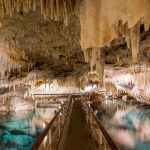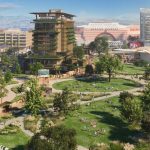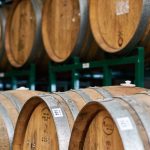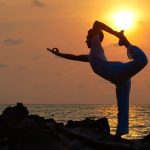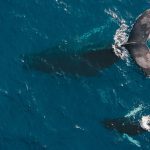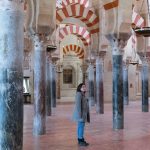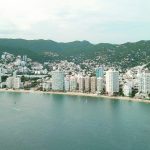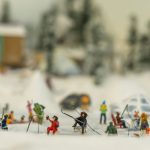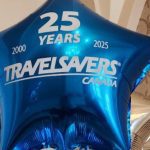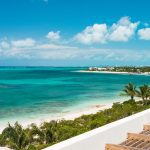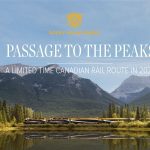Story and Photos by ANN RUPPENSTEIN
Gliding across the water as the imposing Arenal Volcano comes into focus, Elidier Rojas of Pedal Board Costa Rica turns and shouts, “You can jump in if you want.”
Picture a stand-up paddleboard with handles for balance that’s propelled forward by a stepping mechanism instead of a paddle, and you’ve got a pedal board. While we’d been attempting to meticulously maneuver the devices on the large lake to avoid unintentionally getting soaked in the wake of motorboats, the owner of the family-run business had other intentions.
Pura Vida! One of the coolest things I did in #CostaRica was pedal boarding on Arenal Lake… and I managed not to fall in! @VoxCanada @Visit_CostaRica @CdnTravelPress pic.twitter.com/U2GgUJL4JK
— Ann Ruppenstein (@AnnCTP) January 20, 2020
Leaping gleefully head-first off his board, tour guide Rhyan Cruz is among the first in our small group to take the plunge, embodying what’s known locally as the Pura Vida lifestyle. Although the popular Costa Rican colloquial phrase, which translates to pure life, means living life to the fullest, while nurturing the mind, body and soul through such things as wellness and adventure activities, Cruz explains that the term was actually coined from the 1956 Mexican movie of the same name.
“Here, in Costa Rica, it is more than just a saying – it is a way of life,” he says. “Costa Ricans, Ticos, use this term to say hello, to say goodbye, to say everything’s great, to say everything’s cool. However, it is not the words that reflect the true meaning of Pura Vida! – Pura Vida is the way Ticos live.”

In a resting phase since 2010, Arenal was the country’s most active volcano for 43 years, and the small town of La Fortuna remains a hub for travellers drawn to quintessential Costa Rican experiences such as chasing waterfalls, soaking in therapeutic hot springs, sloth encounters, and a healthy dose of outdoor activities like hiking, rappelling, canyoning, zip-lining, and a plethora of water excursions, all in the foothills of volcanoes. If it’s adventure and wellness your clients seek, there’s no end to the options in Costa Rica. Fans of ABC’s hit reality show The Bachelor can also look forward to seeing the destination showcased in the current season featuring pilot Peter Weber.
Collecting experiences over things
Over the past 18 years as a guide, Cruz says he’s witnessed a shift in what visitors seek from a vacation in the Central American destination brimming with exotic wildlife, lush rainforest, misty cloud forest, and dramatic landscapes lined with waterfalls and volcanoes.
 “I’ve been seeing how people used to be tourists, now it’s more travellers who are looking for life experiences beyond just visiting a place,” he says. “It’s not just sitting down on the beach, people want to see a little bit more, to learn about the culture, and have the real Costa Rican experience.”
“I’ve been seeing how people used to be tourists, now it’s more travellers who are looking for life experiences beyond just visiting a place,” he says. “It’s not just sitting down on the beach, people want to see a little bit more, to learn about the culture, and have the real Costa Rican experience.”
Perched on top of a hillside overlooking Poas, Barva, and Irazu Volcanoes, the Central Valley and the Nicoya Gulf in the Pacific Ocean, the eco-friendly Chayote Lodge seeks to provide more than a home base for travellers looking to explore nearby national parks, waterfalls, and coffee fields.
 Less than an hour from Juan Santamaría International Airport, the property offers various day tours designed to connect travellers with authentic cultural and lifestyle experiences.
Less than an hour from Juan Santamaría International Airport, the property offers various day tours designed to connect travellers with authentic cultural and lifestyle experiences.
This is how we wind up in the kitchen of Elida Morera’s home – not just to eat – but to help cook a traditional meal with fried plantains and gallo pinto on a wood-burning stove.
“You see a little bit the real Costa Rica,” says Cruz. “You are able to see how a real Costa Rican family lives.”
Another tour option lets us explore some of the natural beauty Costa Rica is known for near the small village of Los Bajos del Toro. After traversing down some 350 steps under the warmth of the sun, the reward is a view of Catarata Del Toro, a captivating waterfall that plunges 90 metres into an old volcanic crater. Set in a private ecological reserve, the scenery gives way to a movie-worthy scene reminiscent of Jurassic Park. This is the Costa Rica we’ve come to see.

Come for the adventure
The sun is setting as the bus arrives at Buena Vista Del Rincon, the final stop on the trip. Although we arrived in time to soak up a spectacular sunset, it’s not until the following morning that we realize the grandeur of the property. In addition to a hotel and spa, the site is also home to an eco-adventure park with hanging bridges, zip-lining, thermal hot springs, three waterfalls, and more, which can also be booked for guests not staying on the premise.
I hadn’t been on a horse since getting booted off one in elementary school. Although I remained unscathed, my co-rider had to seek medical attention, and it was all in all an experience that left little desire to get back on the saddle for another 20 years. Despite my initial trepidation as my horse trotted along seemingly ignoring any control I tried to exert through the reins – could it sense my fears? — I soon felt at ease marvelling at the scenic countryside and managed to avoid reenacting a Hollywood moment of unruly equine species galloping away with riders holding on for dear life.
Gone riding ? at Buena Vista Lodge. @VoxCanada @AnnCTP @Visit_CostaRica pic.twitter.com/deMhFQvi2z
— Baxter Media (@CdnTravelPress) November 26, 2019
Along with the adventure activities, nature is just as big a draw here. An ideal spot to end the day is by soaking in the hot springs and mud baths from a thermal water spring from Rincon de la Vieja Volcano, which can be accessed by horseback or on a tractor ride.
Poop du jour
Shortly after lunch, the conversation had taken a turn.
Among its eco-friendly initiatives, Buena Vista Del Rincon uses a biodigester to produce methane gas from manure and grey waters, which in turn gets used to power cooking devices and to dry the hotel’s linens in the laundry room.
 “Do you know how much a horse defecates per day? Do you know how much a human defecates per day? Humans defecate on average half a kilogram per day, but a horse, 20 kilograms per day. We have 250 horses. We take that manure, ferment it and produce gas,” the property’s environment director Medardo Moscoso explains enthusiastically. “People can feel happy when they defecate here because it has a real good purpose. Not only to defecate, but to produce gas to cook for another person. It’s really interesting.”
“Do you know how much a horse defecates per day? Do you know how much a human defecates per day? Humans defecate on average half a kilogram per day, but a horse, 20 kilograms per day. We have 250 horses. We take that manure, ferment it and produce gas,” the property’s environment director Medardo Moscoso explains enthusiastically. “People can feel happy when they defecate here because it has a real good purpose. Not only to defecate, but to produce gas to cook for another person. It’s really interesting.”
The property’s commitment to sustainability includes reducing its carbon footprint, producing all the hotel’s personal care and cleaning products in-house, and an integrated eco-farm supplying organic vegetables and herbs for its restaurants.
Later, as I gaze out the window on the short flight back to San Jose, I get a glimpse of Costa Rica’s Pacific Coast from a birds-eye perspective, passing over mountain ranges, villages and fascinating landscapes. As Cruz points out what we’re seeing, I realize I must come back. Although I’ve been here twice now, there’s so much left to discover.
ALL IN THE DETAILS
Set to become the world’s first plastic-free and carbon-free country by 2021, Costa Rica has long put sustainability on the forefront. Chayote Lodge and Buena Vista Eco Lodge & Adventure Centre are two eco-friendly options for clients to stay during a getaway. Chayote Lodge offers tours like visiting a coffee plantation and rural villages. Even those who stay elsewhere can head to Buena Vista for a day of activities that includes zip-lining, horseback riding, natural hot springs, and more. For those looking to take in the great outdoors, Pedal Board Costa Rica is a unique way of exploring Arenal Lake. Its dam produces nearly 12% of the country’s total electricity. A trip isn’t complete without hiking to a waterfall, and Catarata Del Toro is Instagram-worthy. Those with a little more time can also take in the nearby Blue Falls of Costa Rica.


